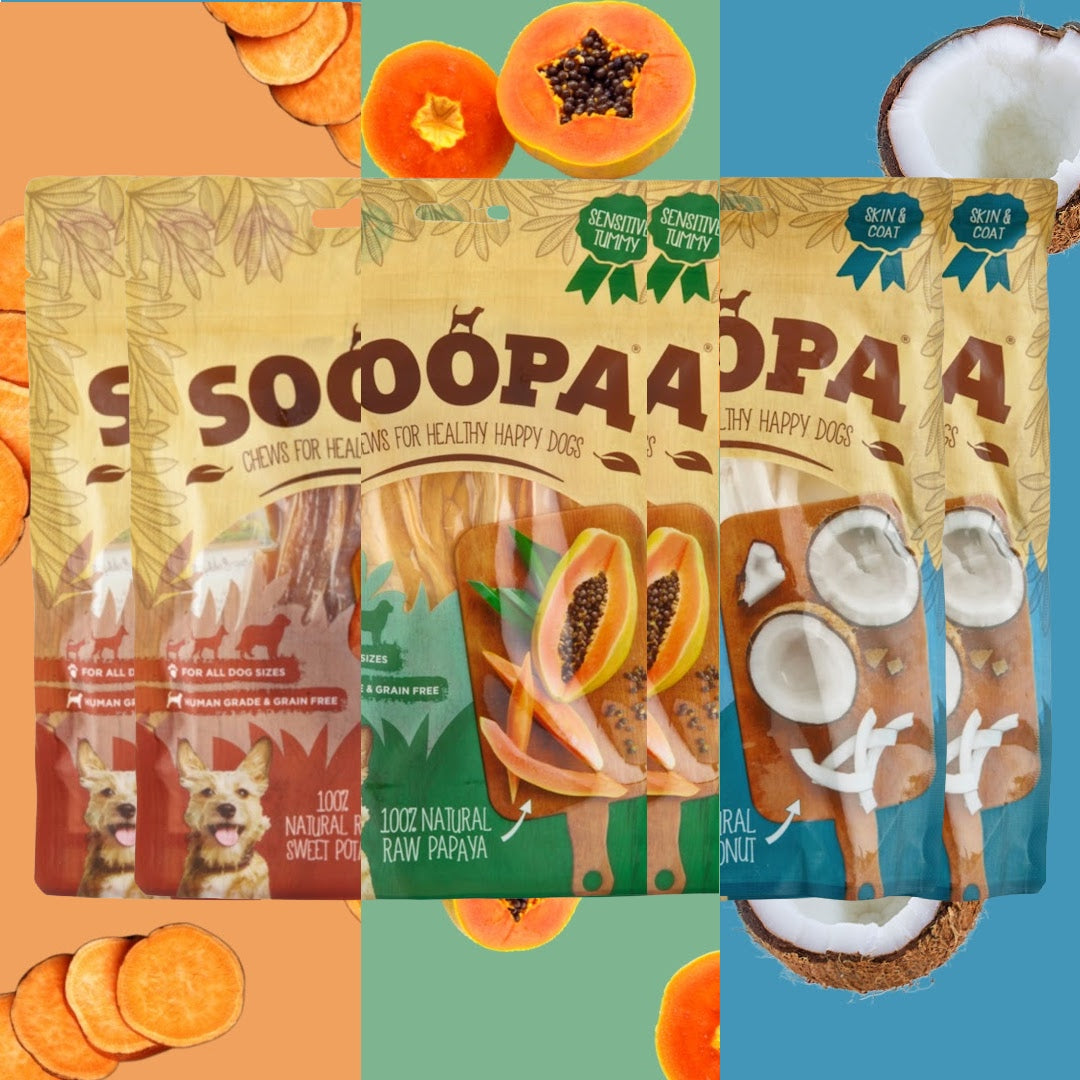How To Put Weight On Your Dog: A Complete Guide for Pet Parents
If you’ve been wondering how to put weight on your dog or how to make your dog gain weight, you’re not alone.
Many pet parents notice their pup looking a little too lean and want to help them bulk up safely and naturally.
Whether your dog has been ill, is recovering from surgery, or is just naturally skinny, this guide will walk you through everything you need to know.
Why Is My Dog Underweight?
Before jumping into how to put weight on your dog, it’s essential to understand why they’re underweight. Some common reasons include:
- Poor diet or low-calorie intake
- High energy levels (e.g. working or active dogs burning more calories than they consume)
- Health issues like parasites, dental problems, diabetes, or thyroid conditions
- Stress or anxiety
- Picky eating or food aversions
If your dog’s weight loss is sudden or severe, always check in with your vet first. Once you’ve ruled out medical concerns, you can focus on healthy weight gain strategies.
How To Make Your Dog Gain Weight Safely
Here are the best, vet-recommended tips for how to put weight on your dog:
1. Feed Calorie-Dense Foods
Switch to a high-quality dog food that’s nutrient-rich and higher in calories. Look for foods with:
- Real meat as the first ingredient
- Healthy fats (like fish oil or chicken fat)
- Digestible carbohydrates (like sweet potato or brown rice)
Tip: You can add healthy toppings like cooked chicken, scrambled eggs, cottage cheese, or sweet potato mash to your dog’s meals to boost calories without upsetting their stomach.
2. Increase Meal Frequency
Instead of feeding once or twice a day, try splitting your dog’s food into three to four smaller meals. More frequent meals help with calorie intake and are gentler on the digestive system.
3. Use Healthy Treats to Supplement
Snacks can help increase calorie intake, just make sure they’re not full of junk!
Looking For The Best Healthy Treat For Your Dog?
Browse our collection of UK's Best Dog Treats For Weight Issues.

👉 Soopa's Dog Treats are made with real fruit, healthy fats, and absolutely no nasties. They’re gentle on sensitive stomachs and perfect for dogs who need extra energy.
4. Add Healthy Oils
Healthy fats are the most calorie-dense nutrient. Adding a spoon of fish oil, flaxseed oil, or coconut oil to meals can help make your dog gain weight naturally and also improve their skin and coat health.
5. Incorporate Light Exercise
It sounds counterintuitive, but light daily exercise can stimulate your dog’s appetite and support muscle gain — especially for underweight dogs who’ve been unwell or inactive.
A gentle walk or play session is enough to get the appetite going.
6. Make Mealtime More Enticing
Some dogs are just picky. Warm their food slightly, add broth, or sprinkle in some natural toppers (like boiled chicken or liver) to make meals more irresistible.
Best Ingredients to Help Dogs Gain Weight
Here are some safe, nutritious ingredients to help your dog bulk up:
| Ingredient | Benefit |
|---|---|
| Sweet Potato | High in calories, gentle on stomach |
| Peanut Butter (xylitol-free) | Calorie-rich, contains healthy fats |
| Eggs | Packed with protein and vitamins |
| Chicken/Lamb | Great protein source for muscle building |
| Salmon Oil | Adds fat + supports dog's skin & coat |
When To See a Vet If Your Dog Isn't Gaining Weight
If your dog has no appetite, severe weight loss, vomiting, or diarrhea, don’t delay - those are signs something more serious may be going on.
Final Thoughts: How to Put Weight on Your Dog
Helping your dog gain weight doesn’t mean stuffing them with treats. It’s about nutrient-dense, quality food, meal consistency, and gentle care. Be patient, healthy weight gain takes time!
And if you’re looking for a treat that supports healthy weight gain without upsetting their tummy, our Banana & Peanut Butter Sticks are a favourite among picky eaters and sensitive pups.
- Browse: Soopa's Healthy Dog Treats


Add a comment